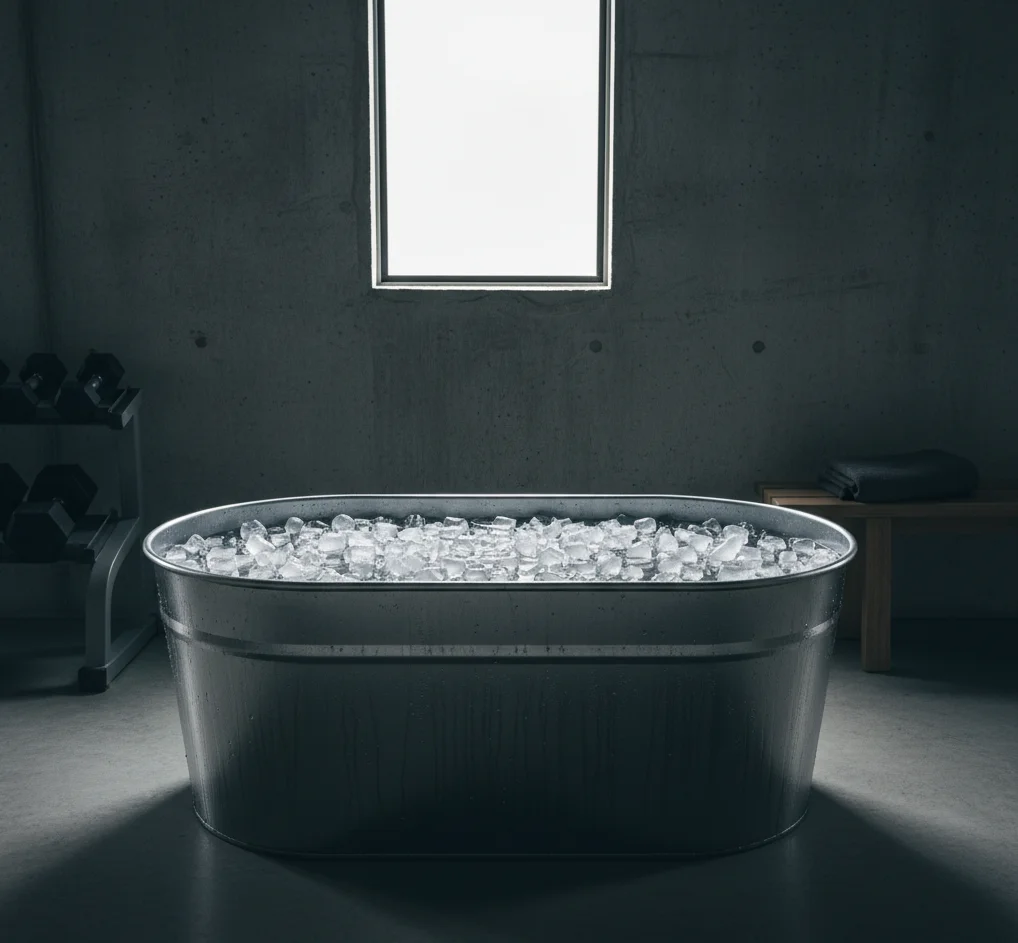Ice Baths After Lifting: Myth or Must?

Have you ever plunged into an icy tub after a heavy leg day? You might want to think twice before turning yourself into a human popsicle.
The Myth: Ice Baths Speed Recovery and Enhance Next-Day Performance
Cold water immersion (CWI) has become synonymous with "elite recovery." The idea is simple: lower muscle temperature to reduce soreness and inflammation. But does dunking yourself in freezing water actually help you recover faster or perform better? Three randomized controlled trials give us insight.
Myth 1: Cold Always Enhances Recovery
The Impact on Muscle Growth
A study on resistance-trained athletes found that regular CWI blunted hypertrophy. Participants who immersed their lower body in cold water after lifting showed reduced type II muscle fiber growth compared with those who performed active recovery (PubMed31513450).
Critical Finding: Anabolic signaling (phosphorylation of ribosomal protein S6) was also suppressed with regular cold water immersion. Yet maximal strength gains were similar between groups, suggesting CWI specifically hampers muscle size but not strength (PubMed31513450).
No Edge on Inflammation
Another trial compared CWI to active recovery on markers of inflammation after intense exercise. Both groups showed similar changes in cytokines like interleukin-6 and tumor necrosis factor-alpha; CWI was no more effective than a light cycling cooldown (PubMed27704555). In other words, if the goal is to reduce inflammation, you can skip the ice bath and go for a gentle spin.
Molecular Evidence
A molecular study looked at genes related to muscle growth and remodeling following CWI versus active recovery. Researchers found CWI reduced expression of growth-related genes, independent of changes in proteolysis or extracellular matrix remodeling (PubMed32695024). In practical terms, regular cold plunges may hinder long-term adaptations.
Myth 2: More Cold Is Always Better
Surprisingly, ice baths can temporarily reduce explosive performance. Immediate post-immersion countermovement jump height decreases due to the cooling effect on nerve conduction. While this effect wears off after a few hours, it means timing matters: avoid CWI right before speed or power sessions.
The Numbers at a Glance
| Metric | Effect of Regular CWI | Implication |
|---|---|---|
| Type II fiber growth | Significantly reduced | Less muscle hypertrophy |
| Anabolic signaling (rpS6) | Suppressed | Blunted growth response |
| Maximal strength | No difference | Strength maintained |
| Inflammatory markers | Similar to active recovery | No unique benefit |
| Jump performance | Temporarily reduced | Avoid before power work |
When Might CWI Help?
Despite the drawbacks for muscle growth, cold water immersion isn't useless. There are specific scenarios where it may provide value:
- Tournament settings: If you have two games in one day, a cold plunge might reduce soreness for the second event.
- Acute inflammation: For acute injuries, cold can limit swelling. This is a different scenario from post-training recovery.
- Psychological benefits: Some athletes report feeling refreshed and mentally reset after cold exposure.
- Rapid turnaround: When you need to recover quickly between sessions within 24 hours, CWI may help manage soreness.
Practical Advice
- Reserve ice baths for high-frequency competitions; otherwise choose active recovery or sleep.
- Limit duration to 10-15 minutes at 10-15 °C. Avoid daily use if hypertrophy is a goal.
- Listen to your body: If CWI leaves you shivering and fatigued, skip it.
- Prioritize fundamentals: Sleep, nutrition, and smart programming trump any recovery modality.
- Use active recovery instead: Light cycling, walking, or swimming promotes blood flow without suppressing adaptation.
Coach's Perspective: Ice baths can reduce perceived soreness, making them useful for athletes in tournaments or those needing rapid recovery between events. However, if your primary goal is building muscle and long-term adaptation, regular cold water immersion after resistance training may work against you. Choose your recovery tools based on your specific goals and competition schedule.
Key Takeaways
- Regular ice baths after lifting can reduce muscle hypertrophy by suppressing anabolic signaling
- CWI offers no unique advantage over active recovery for reducing inflammation
- Strength gains appear unaffected, but muscle size development is compromised
- Use ice baths strategically for rapid turnaround situations, not as a daily recovery practice
- Active recovery (light cardio) provides similar benefits without hampering adaptations